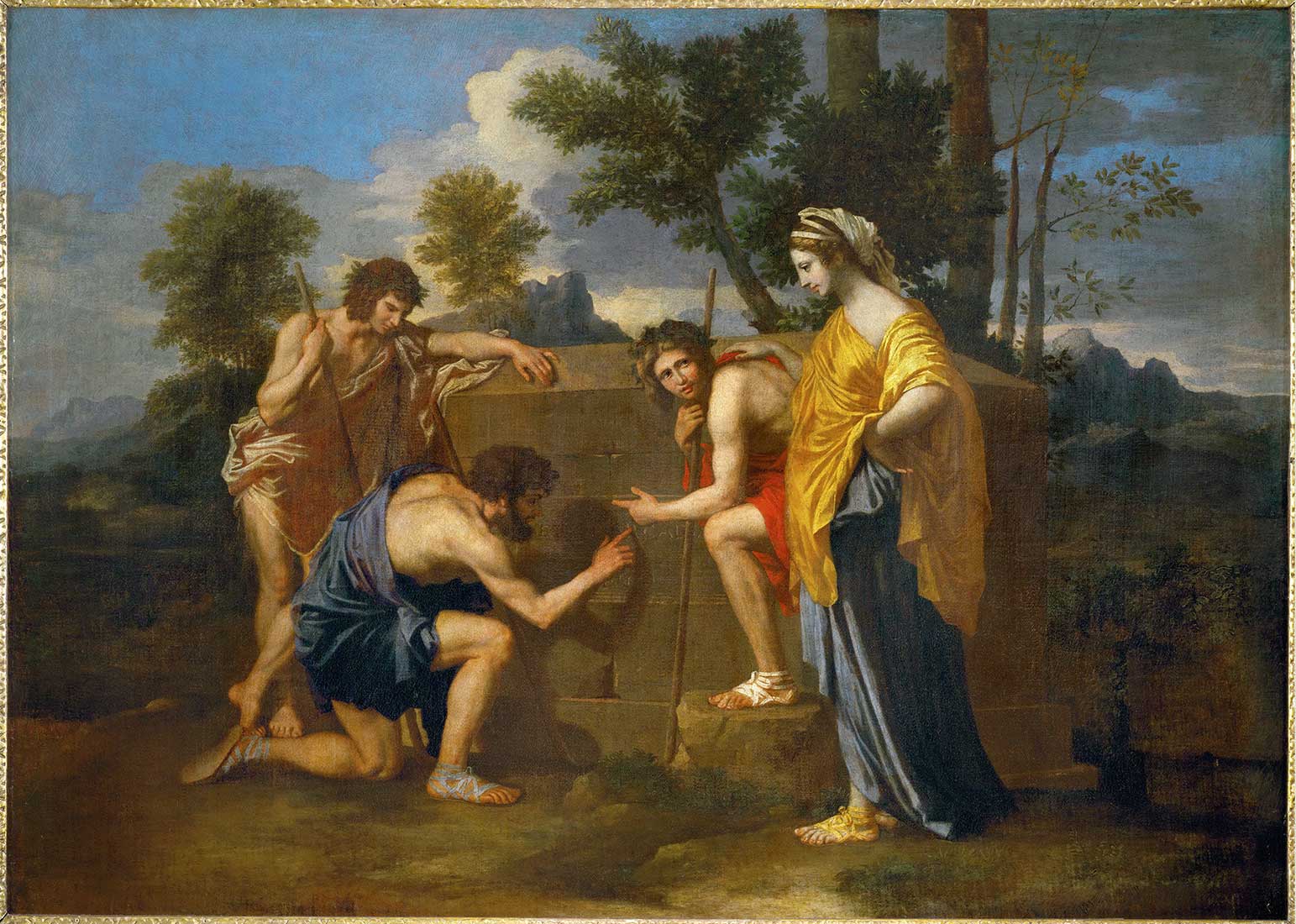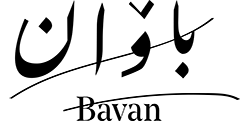* Even in Arcadia there am I
Curated by Hoofar Haghighi, January 24-February 14

* Installation Views
* Individual Works
* Statement
When 17th century French painter Nicolas Poussin created “Even in Arcadia, there am I” he clearly aligned himself with the spirit and optimism of the times. Overzealous with establishing a new world, Enlightenment was after a utopian and optimistic order. This was an era basking in its achievements and celebrating its liberation from the confines of the Middle Ages and giving itself the title of the Age of Reason.Arcadia was that idyllic village Poussin yearned for and thought accessible. He saw his work not only as a new visual rendering of a historical past but as reestablishing and angling a forgotten meaning from the depth of history. Poussin attempts to recall and resuscitate the idyllic pastoral scene was to utilize it to create a new concept of Utopia and Arcadia, the second representing the idea of the unity of mind and matter.
But
Nothing went according to Poussin’s vision of the future of humanity. Enlightenment saw Time as an innocuous and transient and defined History as a flawless tool to record how Time affects human life. But Time didn’t just pass; rather, it left its mark on things. Attrition and forgetfulness was the outcome of this seemingly innocuous passage. As a memory of Time, History was fallible, short-lived, and selective. Thus, meaning was soiled and, without knowing it, Time and History joined hands to render things meaningless.In truth, Enlightenment misrepresented the essence of Time and invented an archive – history – which gradually forced human beings to migrate from their natural state to where the totalitarian mentality reigned supreme. In a self-made dialectic, and with the illusion of filling the gap between mind and matter, the Age of Reason was going from one end of the spectrum to another, and gained nothing in the process.
But
Nothing went according to Poussin’s vision of the future of humanity. Enlightenment saw Time as an innocuous and transient and defined History as a flawless tool to record how Time affects human life. But Time didn’t just pass; rather, it left its mark on things. Attrition and forgetfulness was the outcome of this seemingly innocuous passage. As a memory of Time, History was fallible, short-lived, and selective. Thus, meaning was soiled and, without knowing it, Time and History joined hands to render things meaningless.In truth, Enlightenment misrepresented the essence of Time and invented an archive – history – which gradually forced human beings to migrate from their natural state to where the totalitarian mentality reigned supreme. In a self-made dialectic, and with the illusion of filling the gap between mind and matter, the Age of Reason was going from one end of the spectrum to another, and gained nothing in the process.
The authoritarian mentality affected a fissure between cogito and existence to confiscate and conquer utopia and to define ideals anew. Concepts were the same as before but seen in a new light and assigned new functions. Meaning became an abstraction and reality less and less accessible.Thus, history becomes cyclical and doomed to repeat itself without giving us anything. Utopia loses its thrust and becomes a word in the dictionary, nothing remains of it except an impossible objective that modern human beings can only reach in “infinity.” Utopia became a tool to gauge our distance from what we are not and there is no necessity to reach it. This affected distance, which Poussin optimistically ignored, was to bring objective and subjective unity to the two concepts of utopia and reality gone abstract.Photography emerged as a way to discover the infinite capacities of reality and to feel the limits of its understanding. It revealed a desire to construct a utopian reality by arriving at an exact impression of that singular reality. However, it unwittingly created an alternative reality. Photography became a new toy in the hands of the totalitarian mentality. It was unable to offer an image of existence in connection with its spatial reality but to fragment that singular reality more than ever to reveal the gap between moments.
-Hoofar Haghighi
-Hoofar Haghighi
* Press Release
“Even in Arcadia, there am I” is an exhibition curated by Hoofar Haghighi, held in Bavan gallery, from January 24 to February 14 2020. Works of ten photographers are presented in this show: Alborz Kazemi, Leila Keivan, Mehran Farid, Siavash Khaef, Golnaz Taheri, Samaneh Gholamnezhad, Mahmoodreza Nourbakhsh, Mohammad Ghazali, Siavash Naghshbandi and Farzane Ghadyanloo.
Hoofar Haghighi uses photography as a means to create his own ideas and through his art, he tries to objectify his subjective concerns. Generally speaking, artist-curators take the curating act as a medium and even as a new media for creating artwork in the format of an exhibition. Photography, which is basically a raw material for picturing our ideas, may work as a tool with which we can speculate visible and concealed connections in the world around us. Haghihi in his third curatorial experience has dealt with the idea of exploring the inconspicuous boundaries between visual arts. Here he is inspired by Nicolai Poussin’s painting and consequently argues that photography is an offspring of painting. The idea of this exhibition is neither an urban utopia nor a rural one, it rather uses arcadia as a lead to represent the difference between what one develops in her mind as reality and what takes place in reality. In fact, it is about recognizing a differentiation between, on one hand, what takes place in our lives, the city in which we inhibit and the objects that occupy our surroundings and, on the other hand, what we create in our minds of them. There is a remarkable gap here. However, the gap between these two modes of being, real being and subjective being, makes a rupture, a kind of fault, where an unknown space spreads in. The artists in this exhibition reflect on this gap which is opened up between being and mind from their own perspective.
Hoofar Haghighi uses photography as a means to create his own ideas and through his art, he tries to objectify his subjective concerns. Generally speaking, artist-curators take the curating act as a medium and even as a new media for creating artwork in the format of an exhibition. Photography, which is basically a raw material for picturing our ideas, may work as a tool with which we can speculate visible and concealed connections in the world around us. Haghihi in his third curatorial experience has dealt with the idea of exploring the inconspicuous boundaries between visual arts. Here he is inspired by Nicolai Poussin’s painting and consequently argues that photography is an offspring of painting. The idea of this exhibition is neither an urban utopia nor a rural one, it rather uses arcadia as a lead to represent the difference between what one develops in her mind as reality and what takes place in reality. In fact, it is about recognizing a differentiation between, on one hand, what takes place in our lives, the city in which we inhibit and the objects that occupy our surroundings and, on the other hand, what we create in our minds of them. There is a remarkable gap here. However, the gap between these two modes of being, real being and subjective being, makes a rupture, a kind of fault, where an unknown space spreads in. The artists in this exhibition reflect on this gap which is opened up between being and mind from their own perspective.
The show includes various photographic genres. In fact, a spectrum of ideas ranging from urban exploration photography to idea-based and non-representative photography. Not all of the ten chosen artists are presented with the same number of artworks. Some works
are produced specifically for this exhibition and some selected from previously created artworks.
Mehran Farid, Siavash Khaef and Golnaz Taheri present works that explore the relationship between the city and the ideal with photography. Alborz Kazemi reflects upon the human condition and her juxtaposition with the nature around her. Farzane Ghadyanloo and samaneh gholamnezhad take urban portrait photographs. Leila Keivan creates unreal spaces with a topographical approach. Mohammad ghazali and mahmoodreza nourbakhsh invite us to reconsider city and its objects. Siavash naghshbandi uses the element of accident to show us the arcadia around us.
Photography was first and foremost created to represent the reality in an impeccable manner, however its nature transformed gradually and started to distort the reality. photography as an art noticed that it is an impossible task to realize the reality impartially. Artists in “Even in Arcadia, there am I” attempt to convey the idea that photography can show the reality and in the meanwhile conceal it and abuse photographical capacities against itself. Haghighi has thought over painting, photography and their relevance in this exhibition and also focused on the relationship between photography and the present time.
Mehran Farid, Siavash Khaef and Golnaz Taheri present works that explore the relationship between the city and the ideal with photography. Alborz Kazemi reflects upon the human condition and her juxtaposition with the nature around her. Farzane Ghadyanloo and samaneh gholamnezhad take urban portrait photographs. Leila Keivan creates unreal spaces with a topographical approach. Mohammad ghazali and mahmoodreza nourbakhsh invite us to reconsider city and its objects. Siavash naghshbandi uses the element of accident to show us the arcadia around us.
Photography was first and foremost created to represent the reality in an impeccable manner, however its nature transformed gradually and started to distort the reality. photography as an art noticed that it is an impossible task to realize the reality impartially. Artists in “Even in Arcadia, there am I” attempt to convey the idea that photography can show the reality and in the meanwhile conceal it and abuse photographical capacities against itself. Haghighi has thought over painting, photography and their relevance in this exhibition and also focused on the relationship between photography and the present time.
* Past Exhibitions
Curated by Zahra Ghyasi
December 20,2019-January 17,2020
December 20,2019-January 17,2020
Revision at the House on Abdeh St.
Curated by Takin AghdashlooDecember 28, 2018-January 4, 2019


































